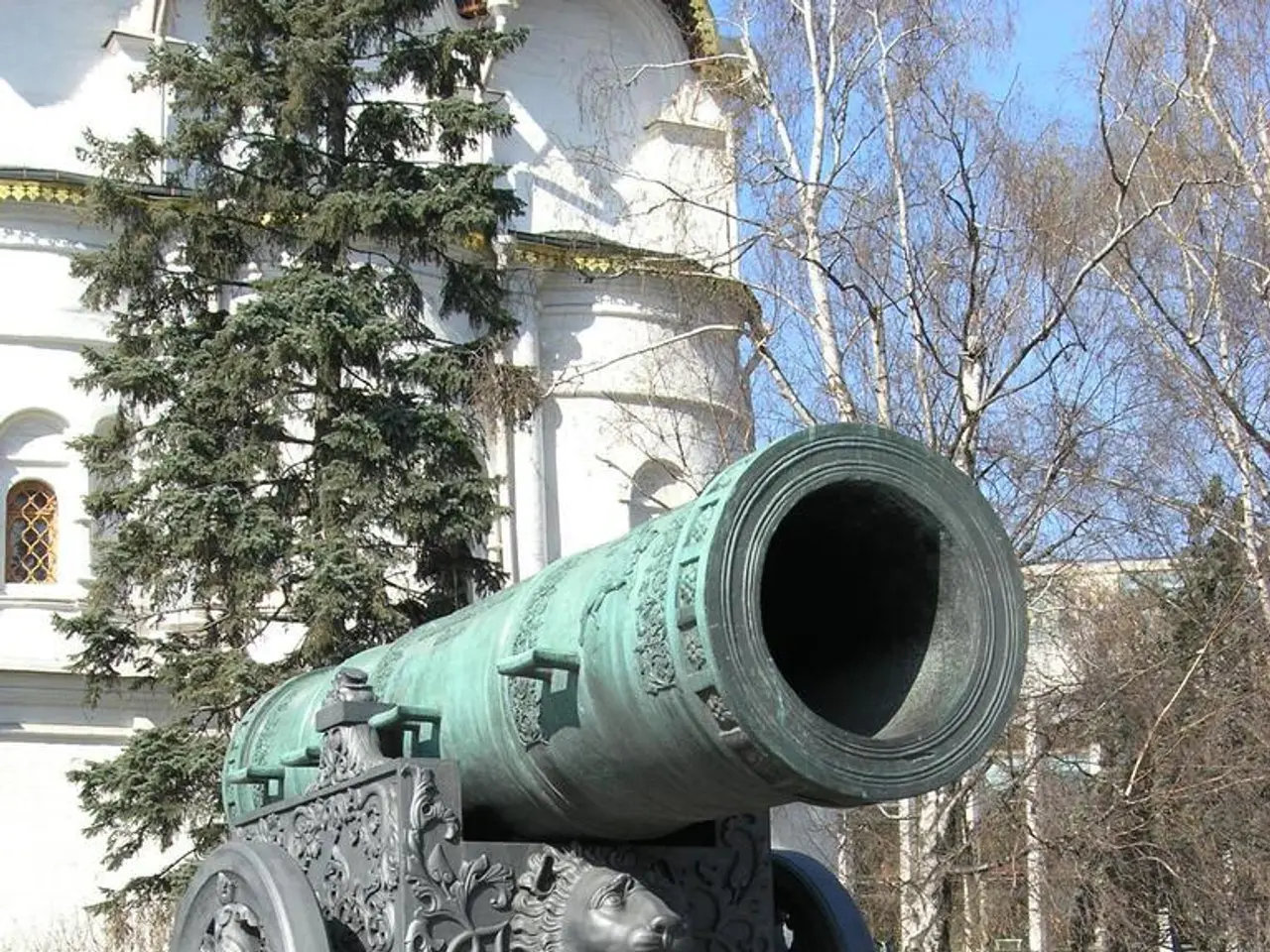Sergeant on Lenin Square likened to "grimy relics from the Underworld" by Obein
In the heart of Yakutsk, the coldest city in the world, stands Lenin Square, home to a series of intriguing metal structures known as sarga. The main antagonist in the 2019 film-fairy tale "Beyberikeen", Digey-baaba, a girl-abaasy, is said to reside in a territory marked by a crooked iron sarga, according to journalist Vitaliy Obedin.
The sarga structures, part of the renovation of Lenin Square, are a sight to behold. With a diameter of 1.2 meters and standing tall at 13 meters, they are an integral part of the city's landscape. Five of these structures have already been installed, with plans for seven more. The structures will be adorned with impact-resistant glass and panels of stainless steel, featuring artistic decoration.
Interestingly, the lighting of these structures can be combined with a fountain's light and music complex, adding an extra layer of allure to these modern installations. However, their design, with many corner pockets and uneven surfaces, makes them difficult to clean, potentially turning them into giant dust collectors.
Vitaliy Obedin's comment comparing the metal structures on Lenin Square to "dust collectors from the Underworld" seems to be a critical or poetic metaphor rather than a direct reference. To understand any connection between these metal structures and Yakut (Sakha) mythology, it helps to consider the cultural and symbolic context.
In Yakut (Sakha) traditional beliefs, the cosmos is often seen as layered, with the Upper World (associated with deities and celestial spirits), the Middle World (the earthly realm of humans), and the Lower World or Underworld (often linked to spirits of the dead and other supernatural entities). The Underworld is typically a mysterious, sometimes dark place associated with ancestors and sometimes malevolent forces.
While there is no widespread traditional Yakut myth directly linking metal urban sculptures to the Underworld, Obedin’s comment might draw on cultural motifs to express a subjective impression. The “dust collectors” phrase could imply that these structures accumulate neglect or indifference, metaphorically gathering dust like forgotten objects in a mystical realm. The “Underworld” reference might suggest a link to the realm of the dead or spiritual forces, reflecting the alien or haunting atmosphere the sculptures evoke in Obedin’s view.
However, unless the metal structures were explicitly designed around Yakut mythical figures or concepts, there is probably no established mythological meaning tied to them. Obedin’s comment should be seen more as artistic or critical imagery inspired by the cultural backdrop.
It is worth noting that, according to Yakut mythology, iron horse hitching posts are in the Underworld with the abaasy. This could potentially add an interesting layer to the interpretation of the sarga structures, but without explicit connections, it remains a speculative association.
Further comments about the "demonic" were made by Vitaliy Obedin in his Telegram channel, but these do not directly relate to the metal structures on Lenin Square. The sarga structures, despite their enigmatic allure, continue to be a topic of intrigue and discussion in the city of Yakutsk.
The sarga structures, with their uneven surfaces and potential to accumulate dust, could metaphorically be likened to "dust collectors from the Underworld," as suggested by journalist Vitaliy Obedin, hinting at a possible connection to Yakut mythology. Interestingly, according to Yakut mythology, iron horse hitching posts are in the Underworld with the abaasy, potentially providing a unique interpretation of the sarga structures.








